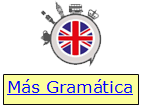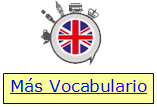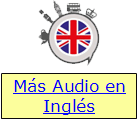|
The Cambridge
CAE Exam
Were speaking about the Cambridge CAE exam today. What is it and should
you take it? Do you even have the level to enter for it? We’ll answer
those questions and more in this week’s episode of…Aprender Inglés con
Reza y Craig.
What is the CAE exam? 
A Cambridge English Advanced qualification shows that you can:
– follow an academic course at university level
– communicate effectively at a managerial and professional level
– participate with confidence in workplace meetings or academic
tutorials and seminars
– express yourself with a high level of fluency.
CEFR level: C1
Takes about 4 hours
Costs about 218 euros (FCE about 198 euros) in Spain – Price for July,
2017
The exam has four papers developed to test your English language skills;
Reading and Use of English, Writing, Listening, Speaking
The Speaking test is taken face to face, with two candidates and two
examiners.
Reading and Use of English (1 hour 30 minutes) 8 parts/56 questions –
Shows you can deal confidently with different types of text, such as
fiction, newspapers and magazines.
Tests your use of English with different types of exercise that show how
well you can control your grammar and vocabulary.
Writing (1 hour 30 minutes) 2 parts – You do two different pieces of
writing, such as essays, letters/emails, proposals, reports and reviews.
Listening (about 40 minutes) 4 parts/30 questions – Tests your ability
to follow and understand a range of spoken materials, such as interviews,
radio broadcasts, presentations, talks and everyday conversations.
Speaking (15 minutes per pair of candidates) – 4 parts – Tests your
ability to communicate effectively in face–to–face situations. You take
the Speaking test with another candidate.
Which part of the exam tends to be the most challenging for Spanish
students?
It varies from student to student, depending on their previous knowledge
of English and natural strengths and weaknesses. There are people who
speak extremely well, for example, but have never had to write a Report
or Proposal in their lives, perhaps not even in their own language, and
find it very challenging in English.
In the Reading and Use of English paper, many (Spanish-speaking)
students frequently find Part 4 (key word sentence transformation) and
Part 7 (choosing the missing paragraphs) very tricky.
Part 4 tests your ability to restructure a sentence without changing its
meaning. So, practice in identifying grammatical structures and possible
synonyms and being able to paraphrase is essential.
Part 7 tests your ability to understand coherence and cohesion in a text.
Knowing how referencing words (eg. it, he, that, the younger man, etc.)
and linking devices (eg. firstly, however, as mentioned earlier, in
addition, etc.) helps you see how the different paragraphs fit together.
As mentioned earlier, in the Writing, Reports and Proposals are often a
new challenge for some students. Reports must be above all informative,
while Proposals need to be persuasive. Reviews can and should give your
opinion/evaluation about something. For Letters/Emails one difficulty is
using the appropriate register or style (eg. formal, informal, serious,
funny, technical, non-technical, business-like, sociable, etc.)
For Listening, the more you listen, the better you get! Many students
find Part 4 (double matching task) very tricky, when you have to do two
tasks at the same time, ie. looking for two types of info in one audio
excerpt among various multiple choice options. Practice is essential.
Podcasts are obviously extremely beneficial for your Listening in
general!!
The Speaking begins easily, but Part 2 (comparing two photos monologue)
can be stressful if you aren’t used to speaking non-stop for a full
minute on your own. Language of comparison and contrast is essential
here. Part 3 (collaborative task) obliges you to interact with your
partner to discuss various options. As well as comparison and contrast,
language of agreeing/disagreeing, giving opinion, asking for/giving
explanation, cause/effect, etc. is all useful here. Language of
speculation/hypothesis is useful throughout the entire Speaking exam.
Is there a big gap between FCE and CAE?
Yes! Students who don’t spend much time in an English-speaking country
usually need about 2 academic years, with about 3-4 hours of class/week
to progress from FCE level (B2) to CAE level (C1). Those who study
extremely hard or live in English-speaking country might be be ready
after a year.
What’s the best way to prepare for the CAE exam?
Go to classes and practise outside class. As well as general grammar and
vocabulary exercises, you should practise the exam format timed, using
CAE exam practice books, so as to be ready for the real thing. See which
parts you’re weakest at and work hardest on improving those parts. You
might consider an intensive CAE exam preparation class a few months the
exam.
 *Dispones
de más
PODCAST en inglés publicados en los cuadernos anteriores *Dispones
de más
PODCAST en inglés publicados en los cuadernos anteriores
a los que puedes acceder directamente así como al índice de su
contenido. |
|
|
